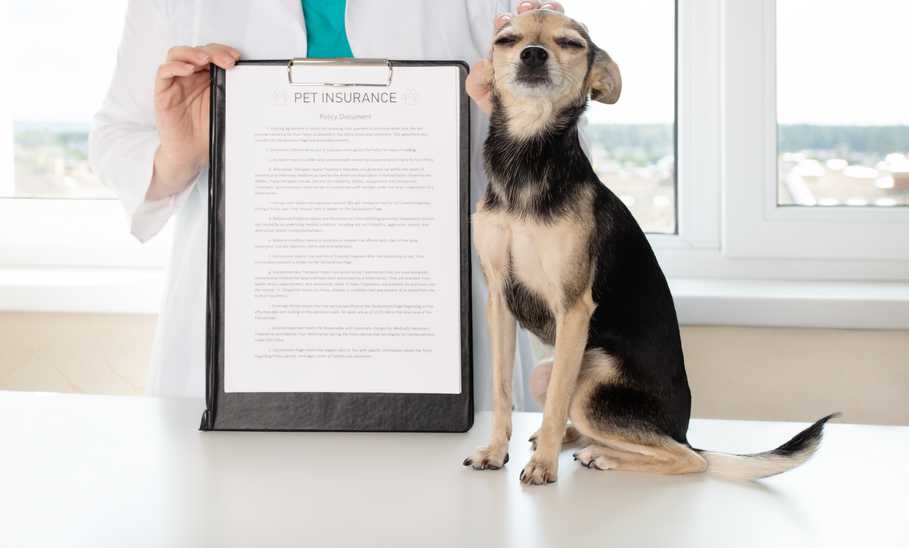Pet-Sitting Insurance: Types, Cost, Companies

Our evaluations and opinions are not influenced by our advertising relationships, but we may earn a commission from our partners’ links. This content is created by TIME Stamped, under TIME’s direction and produced in accordance with TIME’s editorial guidelines and overseen by TIME’s editorial staff. Learn more about it.
Pet sitting is an ideal career for anyone who loves animals. However, as with any type of business, having the right insurance coverage is essential. Pet-sitting insurance protects your business against claims of liability that could cause financial ruin. Let’s take a look at the types of pet-sitting insurance coverage, the cost of coverage, and how to get the best policy for your business.
There are three main types of insurance coverage to protect yourself and your pet-sitting business
General liability insurance protects businesses from third-party claims of property damage and accidental injury, and every business should have it. For a pet-sitting business, it would cover any animals in your care—whether you’re keeping the animal in your home while the owner is on vacation or just walking a dog a few times a week.
If a dog you’re sitting for bites a passerby on a walk, they could sue you for damages resulting from their injury. Without general liability insurance, you would be on the hook for the person’s medical bills. With it, your insurance would pay the claim up to the coverage limits. That’s why it’s so essential to carry this coverage at a minimum.
While general liability insurance protects you against third-party property damage or injury claims, animal bailee insurance covers pets. It is sometimes called “care, custody, or control” coverage.
Animal bailee insurance is a type of liability coverage that protects a client’s items in the policyholder’s possession—in this case their pets. If the pet is injured or stolen while in your care, animal bailee coverage will help pay for the damages. It typically applies to events such as fire, theft, collision, and damage sustained during the course of transportation. If you’re in a car accident while transporting a client’s animal and the pet is injured, animal bailee insurance coverage would come into play.
Bonding protects your pet-sitting business from claims of theft or loss of property from a client. For example, if you’re working in a client’s home and they accuse you of stealing a piece of jewelry or harming a valuable rug, bonding would protect you from having to pay expenses or damages.
Bonding can also come into play if a client accuses your employee of theft.It shows potential clients that you are trustworthy and they will be compensated should any damage befall their possessions.
The cost of pet-sitting insurance varies based on several factors, including the following:
Only two of our five companies quoted prices on their websites. Pet Sitters Associates has a basic package starting at $199 a year. Pet Care Insurance starts at $139 a year and has a recommended package at $229 a year. Both companies offer add-on coverages; the latter doesn’t enumerate prices for those, but the former does, and they could take you as high as nearly $1,500 a year if you added all of them. The other three companies offer quotes upon request that depend on the above criteria.
The website EasyBusyPets, which does not sell insurance but whose stated purpose is “to provide Pet Sitters and Dog Walkers with useful information and guidance about Pet Sitting Insurance and to steer them towards trustworthy sources for additional information,” estimates that the average annual cost of pet-sitting insurance ranges from $200 to $600. All this reinforces that you should always shop around, getting quotes from several insurance providers and comparing them to find the one that offers the most comprehensive coverage for the best price.
Follow these steps to find the right coverage for your business:
There are five primary companies in the U.S. offering insurance for pet-sitting businesses.
| Company | Annual Cost | Coverage |
|---|---|---|
Pet Sitters Associates, LLC | Starting at $199 | General liability, animal bailee, veterinarian expense reimbursement, and lost key |
Choice+ Insurance Services, Inc | Not specified | General liability, animal bailee coverage, veterinarian insurance, business owner’s policy, commercial auto, workers’ compensation, and cyber liability |
Kennel Pro–CUT OUT | ||
Pet Care Insurance | Starting at $139 | General liability, animal bailee, veterinarian expense reimbursement, and lost key |
Business Insurance of the Carolinas | Not specified | General liability; care, custody, or control; bonding; workers’ compensation; commercial auto; and employment practices liability |
When looking for pet-sitting insurance for your business, there are several factors you need to keep in mind. These include the type and amount of coverage offered, deductible options, and cost of coverage.
Knowing what type of coverage you need is essential before getting a quote, so you don’t go with a company that won’t fully cover you and so you can accurately gauge the cost.
You also need to decide what is a safe dollar limit for your coverage. EasyBusyPets says that general liability policies can offer coverage anywhere from $100,000 to $1,000,000, but three of our five companies go as high as $2,000,000 aggregate annually. The more coverage you get, the more expensive your premiums will be.
A deductible is the amount of money you must pay before your insurance kicks in. It’s usually an annual amount. For example, if your deductible is $1,000 and your first claim of the year is for $5,000, you will pay $1,000 and your insurer will pay $4,000. Any further claims in that year will be fully covered. Make sure you opt for a deductible you can afford.
Don’t buy what you can’t afford. Getting quotes from several providers allows you to compare the cost and amount of coverage to find the right balance between your needs and your budget.
Pet-sitting insurance is necessary for anyone paid to care for pets, whether they board animals at home or just walk dogs during the day. Shop around for the best policy to protect both your business and your clients.
Yes, you do.. The cost of coverage is generally much lower than the amount for which you’ll be liable if something happens to one of the pets in your care.
No. However, your state might require you to carry business insurance in order to get a business license.
You make a claim directly with your insurer, whether over the phone, by mail, in person, or online.
Pet-sitting insurance provides three principal types of coverage, though there are a variety of other possible add-on coverages.
The information presented here is created by TIME Stamped and overseen by TIME editorial staff. To learn more, see our About Us page.



